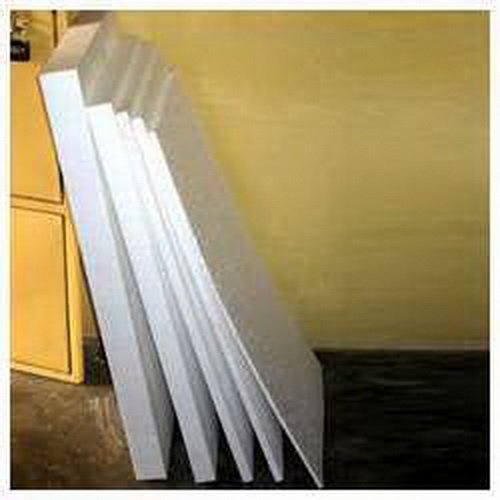Project Report For Thermocol Sheet Manfactuing
Introduction
Project report for Thermocol Sheet Manfacturing is as follows.
Polystyrene and copolymers are referred to as Thermocol Sheets. It is a hard cellular plastic foam substance made from byproducts of petroleum and natural gas. Thermocol sheets are also utilised in a variety of industrial and household packaging items.
Tharmacol Sheets Manufacturing Process
The manufacturing process of thermocol sheets is a complex and intricate process that requires specialized equipment and technical expertise.
Raw Material Preparation :- The first step in the manufacturing process of thermocol sheets is the preparation of raw materials. The primary raw material used in the production of thermocol sheets is polystyrene beads. These beads are obtained by polymerizing styrene monomers. The polystyrene beads are then sorted and cleaned to remove any impurities.
Expansion :- The next step is to expand the polystyrene beads. This is done by heating the beads in a specialized machine called an expander. The expander contains a screw conveyor that moves the beads through a heating chamber. The chamber is heated to a temperature of around 100 degrees Celsius, causing the beads to expand up to 40 times their original size. The expanded beads are then collected in a hopper.
Project Report Sample Of
Thermocol Sheet Manfacturing
Get Completely Custom Bankable Project Report
Molding :- This is done by placing the expanded beads into a mold and applying heat and pressure to them. The mold is made up of two metal plates that are coated with a release agent to prevent the thermocol sheets from sticking to the plates. The mold is then heated to a temperature of around 85 degrees Celsius, and pressure is applied to the plates to compress the beads. The pressure and heat cause the beads to fuse together and form a solid sheet.
Cooling and Cutting :- They are cooled in a cooling chamber to solidify the thermocol sheets. The sheets are then removed from the mold and trimmed to the desired size. The excess material is recycled and used for future production. The trimmed sheets are then stacked and packaged for shipping.
Advantages of Thermocol Sheet Manufacturing
Lightweight: Thermocol sheets are extremely lightweight, which makes them easy to handle and transport, and also reduces transportation costs.
Thermal Insulation: Thermocol sheets have excellent thermal insulation properties, which makes them ideal for use in construction and insulation applications.
Versatility: Thermocol sheets can be easily cut, shaped, and molded to meet specific requirements, making them a versatile material for use in a wide range of applications.
Cost-effective: The manufacturing process for thermocol sheets is relatively simple and inexpensive, which makes them a cost-effective option for many applications.

Disadvantages of Thermocol Sheet Manufacturing
Environmental Concerns: Thermocol sheets are non-biodegradable and can take hundreds of years to decompose, which raises environmental concerns. Improper disposal of thermocol sheets can also cause pollution and harm wildlife.
Flammable: Thermocol sheets are highly flammable and can pose a fire hazard if not handled properly.
Health Hazards: The manufacturing process for thermocol sheets involves the use of toxic chemicals, which can pose health hazards to workers if proper safety measures are not in place.
Recycling Challenges: Thermocol sheets are difficult to recycle due to their low density and complex composition, which limits their reuse options and can lead to them being discarded as waste.
Market Potential Of Thermocol Sheet Manfacturing
Expenses

Product Cost Breakup

Reveneue Vs Expenses

Market Trend

The global thermocol sheet market size was valued at USD 2.41 billion in 2020 and is expected to reach USD 3.21 billion by 2028, with a CAGR of 3.6% during the forecast period
In the packaging industry, thermocol sheets are widely used for their lightweight, shock-absorbing, and insulating properties. They are used for packaging fragile and delicate items such as electronics, glassware, and medical equipment. Additionally, the increasing demand for packaged food and beverages is also expected to drive the growth of the thermocol sheet market.
In the construction industry, thermocol sheets are used for insulation purposes. They are used to insulate walls, roofs, and floors to reduce energy consumption and maintain a comfortable indoor temperature. The increasing demand for energy-efficient buildings is expected to drive the growth of the thermocol sheet market in the construction industry.
Thermocol sheets are also used in packaging, providing excellent protection for delicate products during transport. The rise of e-commerce and online shopping has led to an increase in demand for protective packaging materials, which has resulted in an increased demand for thermocol sheets.
The demand for thermocol sheets is also increasing in the automotive industry. Thermocol sheets are used as a lightweight material in various parts of the car, reducing the overall weight of the vehicle, and improving fuel efficiency. Additionally, thermocol sheets can be easily molded and shaped, making them an ideal material for making car parts.

